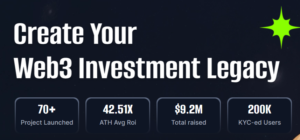
Imagine a world where gaming is not just an entertaining escape but a lucrative career option, where the characters and assets you build can actually make you money. Welcome to the age of GameFi and the Metaverse, a groundbreaking revolution that has fundamentally shifted the gaming landscape.
The Rise of GameFi: Monetizing Virtual Worlds
GameFi, short for Gamified Finance, has ushered in an era where gamers can capitalize on their time and skills. Leveraging blockchain technology, GameFi offers players tangible economic incentives—think digital tokens or tokenized in-game assets. Unlike traditional games where in-game items stay within the confines of that particular ecosystem, assets in GameFi are true property: they can be bought, sold, and traded across various platforms and even converted into real-world currency.
In 2022 NFT game sales alone amassed nearly $3.3 billion, capturing public attention and making it clear that this isn’t just a fad, after 2021’s $5 billion heights. AAA developers are joining the bandwagon, infusing their creativity and experience into this burgeoning space, thus sealing GameFi’s place in the future of entertainment.
Provable Ownership: The Game Changer
The brilliance of GameFi lies in the concept of ‘provable ownership.’ In conventional gaming, players may invest countless hours to unlock or purchase items, but they never really own these digital assets. They’re more like “renting” them from the game’s developers. GameFi changes this dynamic by giving players blockchain-backed proof of ownership, creating a whole new level of engagement and incentive mechanisms.
The Metaverse: The Next Phase in Immersive Experiences
As GameFi provides the economic framework, the metaverse offers the spatial one—a holistic, immersive environment where the digital and physical worlds blur. In these expansive virtual worlds, players can work, socialize, trade, or even attend concerts. Technological advances in Virtual Reality (VR) gear, like Meta’s Oculus Quest and Apple’s Vision Pro, add another layer of immersion, promising a future where virtual experiences are as rich and interactive as real-world ones.
Existing Landscapes: GameFi in Action
The theory is compelling, but what about the practical applications? Consider Upland, a metaverse built on the EOS blockchain that allows players to buy, sell, and trade virtual properties based on real-world locations. Or Alien Worlds, where players form syndicates to manage a crypto treasury and fund new game developments. There are even initiatives like HEALV3RSE, where gaming contributes to fighting climate change, or Sweat Economy, which gamifies fitness and health.
Conclusion: A Paradigm Shift
The integration of GameFi and the metaverse is more than a technological marvel; it’s a cultural and economic shift. Future generations may find it hard to believe there was ever a time when gaming was merely a form of entertainment and not an avenue for financial advancement or truly immersive experiences.
As it stands, GameFi and the metaverse are here to stay, potentially revolutionizing not just how we game, but how we perceive ownership, community, and even reality itself.


